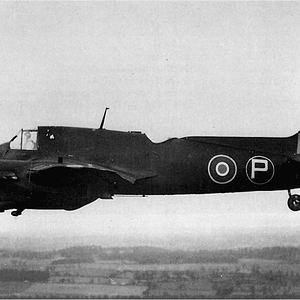Navigation
Install the app
How to install the app on iOS
Follow along with the video below to see how to install our site as a web app on your home screen.
Note: This feature may not be available in some browsers.
More options
You are using an out of date browser. It may not display this or other websites correctly.
You should upgrade or use an alternative browser.
You should upgrade or use an alternative browser.
The D-2 had been turned down by the Air Force a number of months earlier because it lacked adequate airspeed and fell short of other military requirements.
The group of officers spent a day at the Culver City plant, before being flown by Hughes to the secret airfield for inspection of his D-2 prototype. The team, of course, visited other aircraft companies as part of the selection process before returning east.
Test flights of the D-2, took place during the month of May 1943, revealing a number of un-resolvable stability problems. When it became clear that the problems could not be solved, Hughes abruptly abandoned the project. A fire then, under mysterious circumstances, destroyed the hanger along with the plane. The official report stated that lightening was the probable cause of the fire.
Hughes made sure that all evidence of the project disappeared from the site including ashes, charred pieces of wood and metal, foundations, utility lines and other structures – all hauled to a secret burial site somewhere out on the desert.
General characteristics
Crew: one pilot, crew of two (in bomber version)
Length: 57 ft 10 in (17.6 m)
Wingspan: 60 ft (18.29 m)
Height: 27 ft 4 in (8.3 m)
Wing area: 616 ft² (57.23 m²)
Loaded weight: 31,672 lb (14,366 kg)
Powerplant: 2 × Pratt and Whitney R-2800-49, 2,000 hp (1,500 kW) each
Performance
Maximum speed: 433 mph (697 km/h) at 25,000 ft (7,620 m)
Cruise speed: 274 mph (441 km/h)
Range: 1,000 miles (1,610 km)
Service ceiling: 36,000 ft (10,975 m)
Rate of climb: 2,620 ft/min (13 m/s)
The group of officers spent a day at the Culver City plant, before being flown by Hughes to the secret airfield for inspection of his D-2 prototype. The team, of course, visited other aircraft companies as part of the selection process before returning east.
Test flights of the D-2, took place during the month of May 1943, revealing a number of un-resolvable stability problems. When it became clear that the problems could not be solved, Hughes abruptly abandoned the project. A fire then, under mysterious circumstances, destroyed the hanger along with the plane. The official report stated that lightening was the probable cause of the fire.
Hughes made sure that all evidence of the project disappeared from the site including ashes, charred pieces of wood and metal, foundations, utility lines and other structures – all hauled to a secret burial site somewhere out on the desert.
General characteristics
Crew: one pilot, crew of two (in bomber version)
Length: 57 ft 10 in (17.6 m)
Wingspan: 60 ft (18.29 m)
Height: 27 ft 4 in (8.3 m)
Wing area: 616 ft² (57.23 m²)
Loaded weight: 31,672 lb (14,366 kg)
Powerplant: 2 × Pratt and Whitney R-2800-49, 2,000 hp (1,500 kW) each
Performance
Maximum speed: 433 mph (697 km/h) at 25,000 ft (7,620 m)
Cruise speed: 274 mph (441 km/h)
Range: 1,000 miles (1,610 km)
Service ceiling: 36,000 ft (10,975 m)
Rate of climb: 2,620 ft/min (13 m/s)








